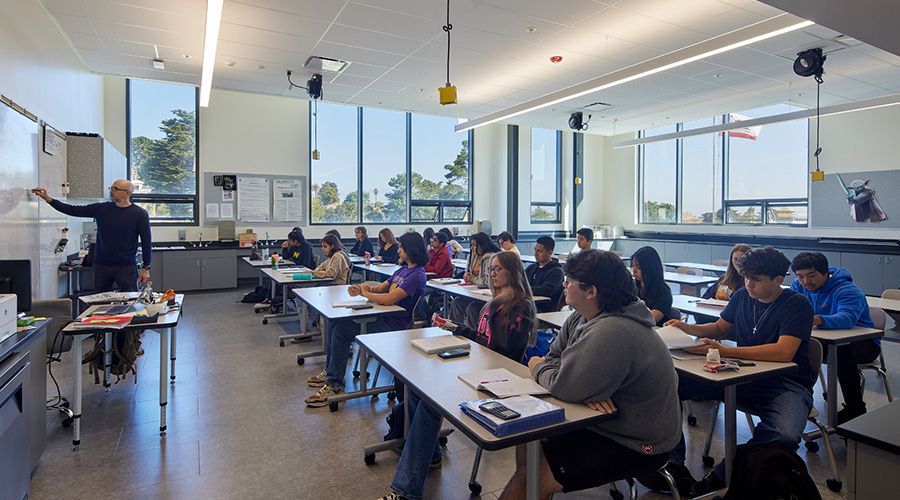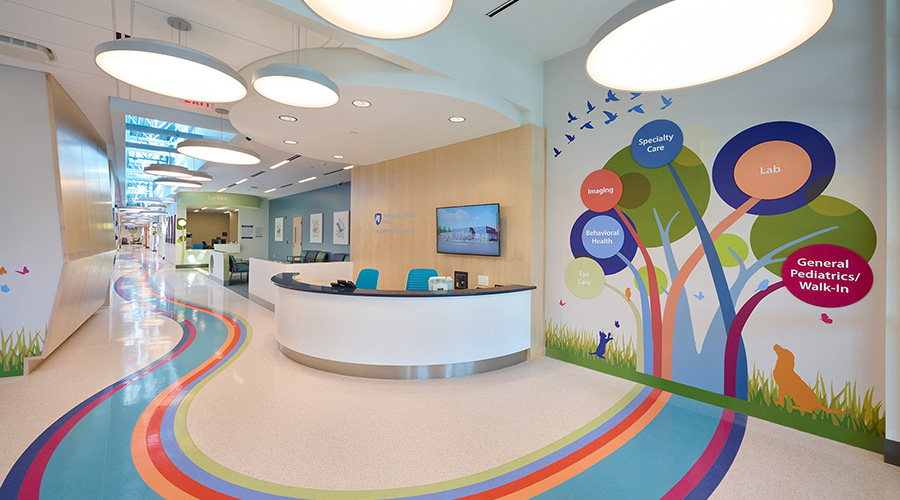Philadelphia's Comeback Kid?
The high-profile Cira Centre could help Philadelphia regain a place as a major player among East Coast cities. But first Gerard Sweeney has to get it built
It has all the makings of a classic comeback tale: A city that has waited more than 10 years for the boom that was about to come. A historic site upon which no developer has ever successfully tread, in a part of town that has never attracted a Class A office building. A credentialed local developer who teamed up with a world-class architect, brandishing a glassy rendering that was the talk of the town the day it made the front page of the local paper. A tax abatement program guaranteed to capture any prospective tenant’s attention. And a project that is exciting for the potential it holds — to harness the latent energy of a prime East Coast location, and to help transform a city that has lagged for years.
It is a long way to the end of this story, though. In Philadelphia, Brandywine Realty Trust’s proposed 32-story Cira Centre is being received with a schizophrenic combination of breathlessness and profound skepticism. Designed by Cesar Pelli — best known for his work on the Petronas Towers in Kuala Lumpur, Malaysia, currently the world’s tallest buildings — and local collaborator Bower Lewis Thrower, the Cira Centre is scheduled for delivery in late 2005 or early 2006. Just a few months into its marketing phase, however, the project still hinges upon the developer’s ability to attract financing — specifically, pre-leasing tenants. Given that uncertainty, combined with Philly’s lackluster real estate history, lingering post-Sept. 11 wariness about high-profile office towers, and a dismal office outlook nationwide, questions about the project’s feasibility abound.
Gerard Sweeney, Brandywine’s president and CEO, is unfazed: “This building has the opportunity to be a landmark for the city and the region, and to serve as a beacon for a whole section of Philadelphia,” he says. “We’re excited.”
Saddled by Sluggishness
Though local real estate professionals bristle at terms like “second-tier” and “secondary market,” there is little debating the fact that, from a real estate perspective, Philadelphia is no New York, no Boston — no Denver, even. And it’s not entirely clear why.
After all, Philadelphia is the nation’s 5th largest city and an easy one- to two-hour commute to both New York City and Washington, DC. Its architecture is informed by rich history, and its downtown still has plenty of room for growth. Philadelphia is lauded for its high-quality restaurants, and the past decade’s efforts to revitalize the downtown and attract new residents have been a measured success. By all rights, Philly should be a bona fide East Coast hub.
Yet the last major office building to break the skyline was delivered in 1991. Since then, the market has crawled at a snail’s pace. Vacancy rates hover in the mid-teens. Current rental rates in Center City average just $25 to $27 per square foot.
“Over the 5- or 6-year period when we saw major rental rate growth — 10 to 20 percent — in cities like Boston, San Francisco and Atlanta, Philly was going through 2 and 3 percent growth,” says John Durham, senior managing director of Cushman & Wakefield Pennsylvania and head of the firm’s Philadelphia operations.
The situation has not been helped by tax structures that have impeded business growth within city limits. While these laws are currently under assault from business and political leaders, and many expect to see changes soon, they have contributed to the city’s loss of tenants to the suburbs.
Despite the challenges inherent in undertaking a major development project in a market like Philadelphia’s, Brandywine’s plan has much to recommend it, starting with location. The Cira Centre would be situated on the far shore of the Schuylkill River on a site owned by Amtrak, connected by a pedestrian bridge to Philadelphia’s beautiful, historic 30th Street Train Station.
“This location offers visibility, access to labor, access to transit — all the pieces that make for a successful project,” says Sweeney. “What it hasn’t had is credibility as an office site.”
The site has a long history of underdevelopment. Just blocks from Mantua, with its reputation as one of the city’s toughest neighborhoods, the Cira Centre would sit a good 15 blocks west of the gleaming skyscrapers of Philadelphia’s small central business district.
This separation from the downtown Class A mainstream is a mixed bag: The site is located in a Keystone Opportunity Zone (KOZ), which automatically qualifies it for state and city tax abatements that will go straight to qualified tenants’ bottom lines. But constructing a high-profile office building outside of the central business district is a risk.
What makes Sweeney believe that its proposal will succeed where so many others have failed in developing the long-vacant 30th Street Station site? For one thing, both developer and architect are confident that their plan for a 735,000-square-foot building is on target in terms of meeting — and not exceeding — the market’s demand. Estimates for getting the Cira Centre built run from $150 to $170 million.
“The other proposals for the site have tended to be very ambitious and not to scale with the demand and activity in the area,” says Mark Shoemaker, associate principal with Pelli & Associates and one of the architects involved with the design. “This is a more modest scheme that may be an early start to those greater plans.”
Turning Tide
Brandywine’s plan is one of a handful of signs of optimism among Philly’s real estate community. In the heart of Center City, at 17th Street and John F. Kennedy Boulevard, another high-rise tower is in the works — this one a skyscraper whose developer, Liberty Properties, has been a leader in Center City development. Both developers say they are positioning themselves to harness the vast potential that has long existed below Philly’s sleepy surface.
“Philly is moving in the direction of becoming a first-tier city,” says John Gattuso, senior vice president of urban development and national marketing with Liberty Properties. “It is a fact that rents are lower than in many other large cities, and that makes it more challenging to deliver a Class A building into this market. But we think that the pieces are falling into place for this city. We have been watching this for 15 years. It is a long-term trend, and we think a very profound one.”
This optimism derives, in part, from a sense that Philadelphia’s tortoise-like growth offers safe harbor in the wake of the 1990’s boom-and-bust cycle.
“Philly’s slower growth pattern has opened the city up from an investment point of view to new players who would not have looked here had the stability not been here,” says Cushman & Wakefield’s Durham. “We were all looking for the highs during the ’90s, trust me, but now we are happy.”
In addition, insiders note a shift in the demographics of the city, says Liberty’s Gattuso. The young, college-educated knowledge worker is attracted to an urban environment, not the suburbs.
In the hopes of harnessing the city’s potential, Brandywine has designed the Cira Centre with an eye toward competing with the best other venues have to offer. Its three-tiered marketing strategy, launched in May, is geared toward wooing tenants away from suburban facilities, other facilities within the city and even other cities.
The obstacles are numerous. Attracting suburban tenants means winning over organizations that chose not to be in the city in the first place.
What’s more, tenants in other downtown buildings won’t get KOZ benefits from moving to the Cira Centre. And wooing tenants from other cities is by no means a sure thing.
“There are not a lot of companies that are looking to relocate, so it’s a battle for any city to attract a relocation,” says Stephen Quazzo, CEO, Transwestern Investment Co. “You need a 24-hour downtown that is a very attractive place to live. You need significant numbers of employers; you need drivers for the economy. Brandywine is a great developer and well capitalized, Pelli is a great architect, and this seems like a very well thought-out project. But that alone will not do it.”
Stephen Budorick, vice president, Trizec Properties, a company that owns such notable landmarks as Chicago’s Sears Tower, puts it bluntly: “I would not build a building in the hopes of attracting out-of-town tenants.”
Build a Better Mousetrap
Sweeney acknowledges the challenges inherent in the Cira Centre’s marketing scheme. “It’s no secret that Philadelphia has had a difficult time attracting business from outside and retaining a tenant base vis-a-vis activity in the suburban counties,” he says. “But we are taking steps to make this building very attractive. In terms of efficiency and range of amenities, it rivals suburban office buildings and far surpasses those in Center City Philadelphia.”
At the most basic level, positioning the building competitively has meant maximizing built-in assets like its access to transit. Hence the planned pedestrian walkway to the train station.
“The 30th Street Station is the second busiest train station in the nation,” says Sweeney. “We will connect it directly to the building so that someone can get off a train from New York or from the suburbs and be in an office less than 10 minutes later.”
Toward the goal of capitalizing on the transit up and down the Northeast corridor and many organizations’ interest in decentralizing operations post-Sept. 11, the Cira Centre may also devote a floor or two to a conferencing and hoteling center.
Brandywine is also working hard to position the Cira Centre strategically in response to post-Sept. 11 security concerns. The parking structure will be adjacent to, rather than beneath, the building in direct response to concerns expressed by prospective tenants. Sept. 11 concerns also affected decisions about how to market the facility.
“We are not positioning this as a skyscraper, and Sept. 11 was certainly a factor in that decision,” says Sweeney. “We wanted to mitigate any concerns tenants might have about being in the upper bank of a high rise.”
Most observers agree that the Sept. 11 backlash has largely subsided and that high-rise construction is not likely to be affected long term. Still, “it is in people’s consciousness that the threat may be heightened, especially if we’re talking about a high-profile building,” says Ron Klemencic, president of structural engineering firm Skilling, Ward, Magnusson, Barkshire and president of the Council on Tall Buildings. “Addressing those fears can give a smart building owner a marketing edge.”
Along with efforts to make the facility more attractive to tenants, Brandywine intends to protect its investment in the project by taking steps to reduce construction costs. A primary cost-saving measure was the decision to avoid building above or adjacent to the railroad tracks that run through the site. While this decision has constrained the Cira Centre’s design somewhat, the architect, developer, and Amtrak officials agree that that will set it apart from many past proposals for the property.
“The scale of this project is part of what makes it appealing,” says Sweeney. “From a cost perspective, it worked in that it was not relying on a tremendous infrastructure investment just to make it possible.”
No Time for Speculation
A lot of insiders are optimistic that the Cira Centre will give Philadelphia’s downtown office market a long-awaited shot in the arm.
“The whole tone of Philadelphia has been lifted since 1986, when the first high rise broke the skyline, and I think Cesar Pelli’s building will do that one more time,” says Cushman & Wakefield’s Durham. “The design I have seen is magnificent and plays off the skyline just beautifully. It is a very exciting project for the city.”
Indeed, many hope the Cira Centre’s energy and influence will bolster not only the up-and-coming area it occupies but also the entire downtown area. In fact, many observers hope to see a westward shift in the epicenter of Philadelphia’s CBD as a result of the project.
“The Sears Tower was built in the west, which was kind of the hinterlands compared to Chicago’s CBD at the time, and now it is the place to be,” says Trizec’s Budorick. “But that can fail, too. Look at the Renaissance Center in Detroit and any number of examples like it. That building was well occupied for years and eventually was sold, but it did not spur a massive relocation to the CBD or reverse a trend toward the suburbs.”
Whether Brandywine will create a landmark facility that functions as a gateway for the region has yet to be seen — as does whether the proposed project will get built at all. After all, one very important step remains: getting a substantial amount of space pre-leased.
“I don’t care if it’s Philadelphia or midtown Manhattan, you have got to have significant pre-leasing in today’s market,” says Quazzo. “And by significant, I mean the rental rates that you would achieve on the tenant or tenants that are pre-leasing would cover the debt service on the construction debt one-to-one.”
Although it is still early in the game, Sweeney reports that the response to the project from the marketplace has been very positive. Brandywine, he says, expects to hit a home run.
“From a design standpoint the building is stunning, from an efficiency standpoint it is the top of the market, and from an all-out economic standpoint it’s tough to beat,” he says. “We view it as a tremendous opportunity for this building and for the city of Philadelphia.”
Abigail Kelly is a freelance writer who frequently covers facility and real estate issues.
Designing Security Features From the Ground Up
Heightened awareness of risks has facility executives around the country pondering ways to increase security; some are feasible only in new construction like the Cira Centre. Here are safety and security details of the proposed project:
- Stair tower lobbies with wider stairwells and landings
- Emergency communications system at all landings
- Blast-proof foundation/structural system
- Pressurized stair towers and elevator shafts
- Redundant fire command station outside the building
- Single lobby access point
- State-of-the-art building security system with 24/7 security personnel
- Building security checkpoints
- Secure loading dock with hydraulic security bollards
- Bollards at building perimeter
Vacancy Rates Rise Amid Economic Toils
If the Cira Centre is to be built, Brandywine Development will have to overcome one ugly fact of life in 2002: Philadelphia’s vacancy rate is the highest it has been in at least five years and exceeds that of most major commercial office markets.
According to a midyear 2002 report of office market conditions released by ONCOR International, Philadelphia’s total market vacancy rate of 15.62 percent ranks 29 of 43 markets surveyed. It ranks just behind St. Louis at 15.28 percent and Minneapolis at 15.7 percent.
Philadelphia isn’t the only city that’s become a tenant’s market. Most North American office markets are slumping from pressures brought on by an oversupply of space, the Oncor survey found.
On the good side, according to Oncor, no future dramatic downturns are expected. Instead, the report’s authors caution building owners to watch for “statistical slippage” — vacancy rates inching upward, rental rates inching downward and overall absorption lingering.
Tenant hesitancy and economic uncertainty are among the leading causes for the market’s sluggishness to recover. Overall vacancy rates crept upwards over the past 6 months while average rental rates continued to slide, according to the Oncor report. The aggregate average vacancy rate in North America’s major central business districts rose from 12.57 percent at year-end 2001 to 13.33 percent at mid-year 2002. Of the central business districts surveyed, 72 percent reported increased vacancy rates.
The percentage of unoccupied space also grew marginally in the submarkets surrounding the central business districts, from 14.01 percent at year-end 2001 to 14.84 percent at midyear 2002. Almost 8 out of every 10 — 78 percent — suburban office markets reported an increase in vacancy rates during the first half of the year.
Mike Lobash, executive editor
How Philly Fares
Total market vacancy rate (percent) for the cities with the lowest and highest vacancy rates, along with Philadelphia
1. Manhattan 6.55
2. Ottawa 8.41
3. Washington, D.C. 8.92
4. Edmonton 9.05
5. Seattle 9.41
29. Philadelphia 15.62
39. Chicago 18.92
40. Atlanta 19.73
41. San Francisco 19.79
42. Denver 21.60
43. Silicon Valley 21.68
Source: Oncor International
Related Topics:











